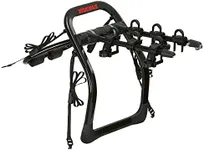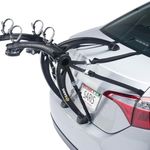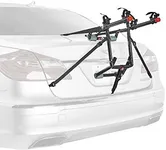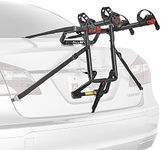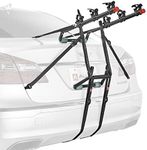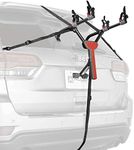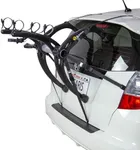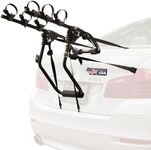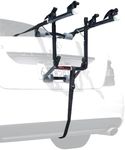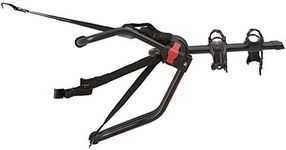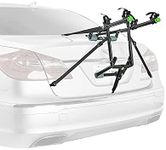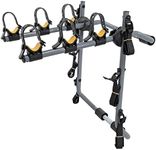Buying Guide for the Best Trunk Mount Bike Racks
Choosing a trunk-mount bike rack can make transporting your bike much easier and more convenient, especially if you don’t have a roof rack or hitch on your car. The right rack should fit your vehicle securely, hold your bikes safely, and be easy to use. When shopping, it’s important to consider how many bikes you need to carry, how often you’ll use the rack, and how easy it is to install and remove. Understanding the key features will help you find a rack that matches your needs and keeps your bikes protected during travel.Bike CapacityBike capacity refers to the number of bikes a rack can hold at one time. This is important because you want a rack that can carry all the bikes you plan to transport, but not be unnecessarily bulky if you only need to carry one. Racks typically range from holding one to three bikes. If you usually ride solo, a single-bike rack is lighter and easier to handle. For families or group rides, a two- or three-bike rack is more practical. Think about your usual riding companions and choose a capacity that fits your regular needs.
Compatibility with VehicleCompatibility means how well the rack fits your specific car. Not all trunk-mount racks fit every vehicle, as shapes and sizes of trunks and rear spoilers vary. A good fit is crucial for safety and stability. Racks often have adjustable arms and straps to fit different vehicles, but it’s important to check the manufacturer’s fit guide or test the rack on your car before buying. If you have a sedan, hatchback, or SUV, make sure the rack is designed to work with your vehicle type. Always prioritize a secure fit to avoid damage to your car or bikes.
Mounting System and StrapsThe mounting system and straps are what hold the rack onto your car and keep the bikes in place. This is important for both safety and ease of use. Some racks use simple hook-and-strap systems, while others have more advanced tightening mechanisms. Basic systems are usually quicker to install but may need more frequent adjustment. More advanced systems can offer a tighter, more secure fit but might take longer to set up. If you plan to remove and reinstall the rack often, look for a system that balances security with convenience.
Bike Attachment MethodThis refers to how the bikes are held on the rack. Some racks use cradles with straps, while others use arms or platforms. The attachment method is important because it affects how stable your bikes are during transport and how easy it is to load and unload them. Cradles with straps are common and work well for most bikes, but may not fit all frame shapes. Platform-style attachments can be more stable and easier for heavier bikes. Consider the types of bikes you have—if you have unusual frames or kids’ bikes, check that the rack can accommodate them.
Padding and ProtectionPadding and protection features help prevent scratches or damage to your car and bikes. This is important because trunk racks rest directly on your vehicle’s paint and hold your bikes close together. Look for racks with soft rubber or foam padding where the rack touches your car, and cushioned cradles or straps for the bikes. If you’re concerned about keeping your car and bikes in top condition, prioritize racks with generous padding and protective features.
Ease of Storage and PortabilityEase of storage and portability refers to how compact and lightweight the rack is when not in use. This matters if you have limited storage space at home or need to move the rack between vehicles. Some racks fold flat for easy storage, while others are bulkier. If you’ll be taking the rack on and off frequently or storing it in a small space, look for a model that folds down and isn’t too heavy to carry.
